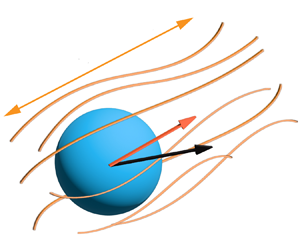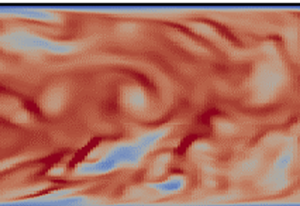Refine listing
Actions for selected content:
1417150 results in Open Access
EUR volume 64 issue 3 Cover and Front matter
-
- Journal:
- European Journal of Sociology / Archives Européennes de Sociologie / Volume 64 / Issue 3 / December 2023
- Published online by Cambridge University Press:
- 23 April 2024, pp. f1-f6
-
- Article
-
- You have access
- Export citation
Gorerite, CaAlFe11O19, a new mineral of the magnetoplumbite group from the Negev Desert, Israel
-
- Journal:
- Mineralogical Magazine / Volume 88 / Issue 4 / August 2024
- Published online by Cambridge University Press:
- 23 April 2024, pp. 451-460
-
- Article
- Export citation
Two new Neotetraonchus species (Dactylogyridea, Dactylogyridae) parasitising the Peruvian sea catfish Galeichthys peruvianus (Siluriformes, Ariidae), including molecular data
-
- Journal:
- Journal of Helminthology / Volume 98 / 2024
- Published online by Cambridge University Press:
- 23 April 2024, e35
-
- Article
- Export citation
MGM volume 88 issue 2 Cover
-
- Journal:
- Mineralogical Magazine / Volume 88 / Issue 2 / April 2024
- Published online by Cambridge University Press:
- 23 April 2024, p. f1
-
- Article
-
- You have access
- Export citation
Equality, Subordination, and Methodology in Discrimination Theory: A Reply to Critics
-
- Journal:
- Dialogue: Canadian Philosophical Review / Revue canadienne de philosophie / Volume 63 / Issue 1 / April 2024
- Published online by Cambridge University Press:
- 23 April 2024, pp. 95-117
-
- Article
-
- You have access
- Open access
- HTML
- Export citation
ADAM SMITH’S WEALTH OF NATIONS IS STILL RELEVANT TO UK TRADE POLICYMAKING ON INTERNATIONAL TRADE – CORRIGENDUM
-
- Journal:
- National Institute Economic Review ,
- Published online by Cambridge University Press:
- 23 April 2024, p. 1
-
- Article
-
- You have access
- HTML
- Export citation
The Russian poet Marina Tsvetaeva (26 September 1892 to 31 August 1941): attachment, politics and suicide – Psychiatry in literature
-
- Journal:
- The British Journal of Psychiatry / Volume 224 / Issue 5 / May 2024
- Published online by Cambridge University Press:
- 23 April 2024, p. 146
- Print publication:
- May 2024
-
- Article
-
- You have access
- HTML
- Export citation
Pluralist Theories of Wrongful Discrimination
-
- Journal:
- Dialogue: Canadian Philosophical Review / Revue canadienne de philosophie / Volume 63 / Issue 1 / April 2024
- Published online by Cambridge University Press:
- 23 April 2024, pp. 9-20
-
- Article
-
- You have access
- Open access
- HTML
- Export citation
The indications, surgical techniques, and complications of transoral robotic surgery in total laryngectomy: a systematic review
-
- Journal:
- The Journal of Laryngology & Otology / Volume 138 / Issue 9 / September 2024
- Published online by Cambridge University Press:
- 23 April 2024, pp. 878-883
- Print publication:
- September 2024
-
- Article
- Export citation
A psychiatrist on the cusp of independence: Owen Berkeley-Hill on how to nudge social change in India, Jain et al
-
- Journal:
- The British Journal of Psychiatry / Volume 224 / Issue 5 / May 2024
- Published online by Cambridge University Press:
- 23 April 2024, p. 179
- Print publication:
- May 2024
-
- Article
-
- You have access
- HTML
- Export citation
Pitfalls for the sustainability of forest transitions: evidence from Southeast Asia
-
- Journal:
- Environmental Conservation / Volume 51 / Issue 3 / September 2024
- Published online by Cambridge University Press:
- 23 April 2024, pp. 152-162
-
- Article
-
- You have access
- Open access
- HTML
- Export citation
Social Equality and Wrongful Discrimination: Introduction to the Special Issue on Moreau's Faces of Inequality
-
- Journal:
- Dialogue: Canadian Philosophical Review / Revue canadienne de philosophie / Volume 63 / Issue 1 / April 2024
- Published online by Cambridge University Press:
- 23 April 2024, pp. 1-7
-
- Article
-
- You have access
- HTML
- Export citation
RES volume 60 issue S1 Cover and Front matter
-
- Journal:
- Religious Studies / Volume 60 / Issue S1 / May 2024
- Published online by Cambridge University Press:
- 23 April 2024, pp. f1-f2
- Print publication:
- May 2024
-
- Article
-
- You have access
- Export citation
Density-contrast induced inertial forces on particles in oscillatory flows
-
- Journal:
- Journal of Fluid Mechanics / Volume 985 / 25 April 2024
- Published online by Cambridge University Press:
- 23 April 2024, A33
-
- Article
-
- You have access
- Open access
- HTML
- Export citation
Pediatric Medical Countermeasures: Antidotes and Cytokines for Radiological and Nuclear Incidents and Terrorism
-
- Journal:
- Disaster Medicine and Public Health Preparedness / Volume 18 / 2024
- Published online by Cambridge University Press:
- 23 April 2024, e76
-
- Article
-
- You have access
- Open access
- HTML
- Export citation
Breaking through Depression: New Treatments and Discoveries for Healing by Philip Gold. Allen Lane. 2023. £25 (hb). 272 pp. ISBN 978-0241659052
-
- Journal:
- The British Journal of Psychiatry / Volume 224 / Issue 5 / May 2024
- Published online by Cambridge University Press:
- 23 April 2024, pp. 182-183
- Print publication:
- May 2024
-
- Article
-
- You have access
- HTML
- Export citation
Anatomie d'un populisme émergent ? La communication en ligne du Parti conservateur du Québec
-
- Journal:
- Canadian Journal of Political Science/Revue canadienne de science politique / Volume 57 / Issue 2 / June 2024
- Published online by Cambridge University Press:
- 23 April 2024, pp. 427-451
-
- Article
-
- You have access
- Open access
- HTML
- Export citation
RES volume 60 issue S1 Cover and Back matter
-
- Journal:
- Religious Studies / Volume 60 / Issue S1 / May 2024
- Published online by Cambridge University Press:
- 23 April 2024, pp. b1-b2
- Print publication:
- May 2024
-
- Article
-
- You have access
- Export citation
The role of psychosis and clozapine load in excessive checking in treatment-resistant schizophrenia: longitudinal observational study
-
- Journal:
- The British Journal of Psychiatry / Volume 224 / Issue 5 / May 2024
- Published online by Cambridge University Press:
- 23 April 2024, pp. 164-169
- Print publication:
- May 2024
-
- Article
-
- You have access
- Open access
- HTML
- Export citation
Resolvent analysis of turbulent flow laden with low-inertia particles
-
- Journal:
- Journal of Fluid Mechanics / Volume 985 / 25 April 2024
- Published online by Cambridge University Press:
- 23 April 2024, A27
-
- Article
-
- You have access
- Open access
- HTML
- Export citation







